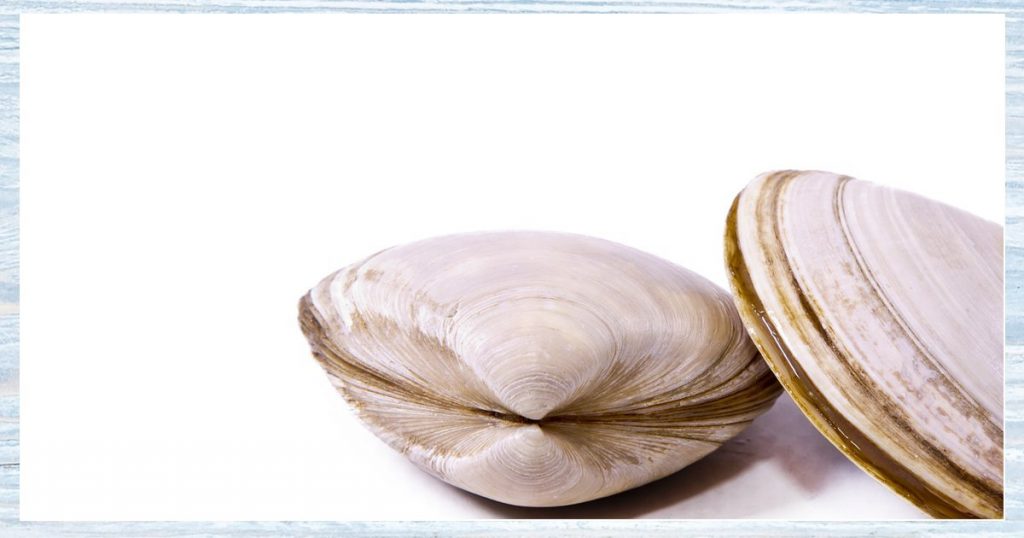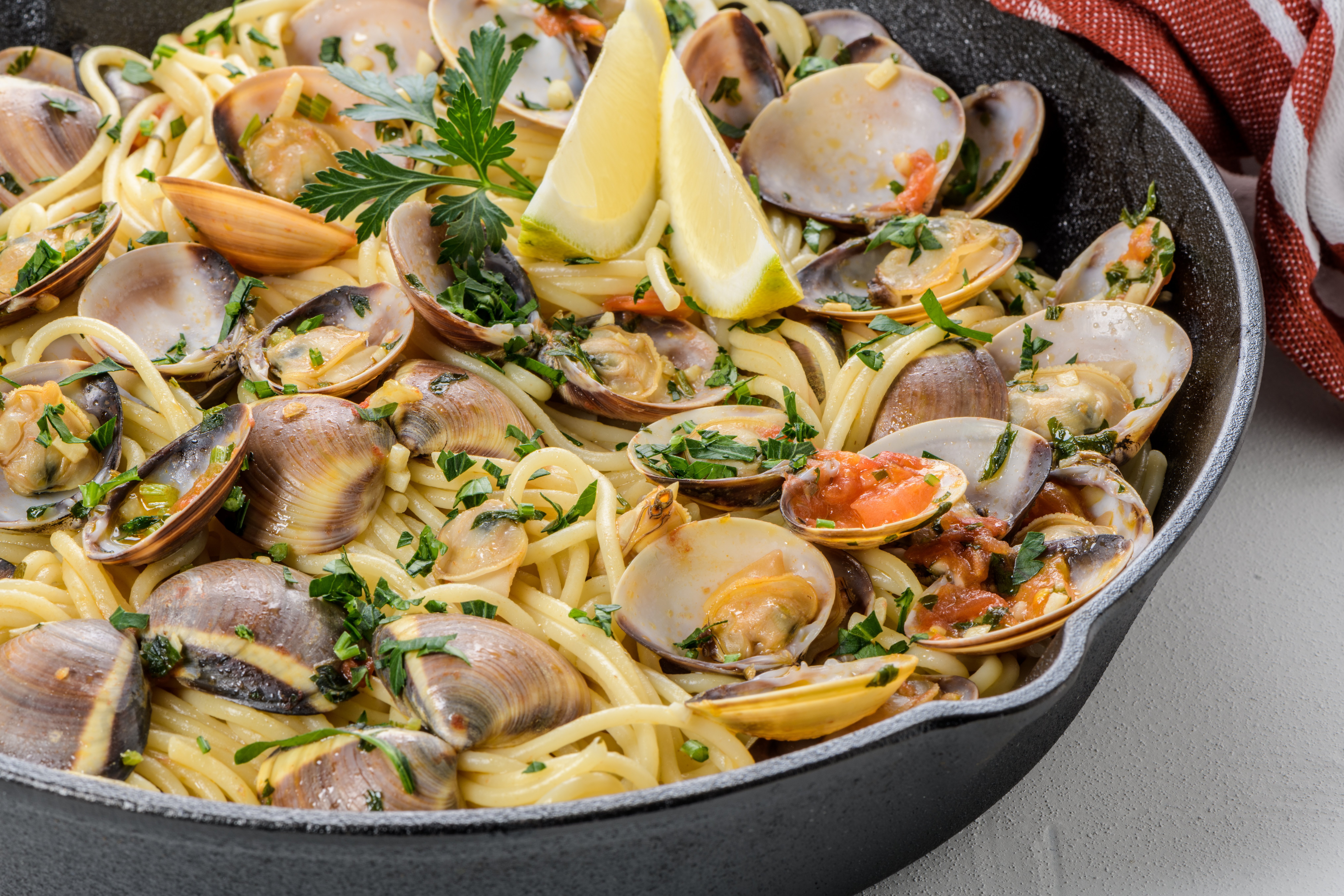
Last updated: 10 May, 2025 @ 12:11
Spaghetti vongole has to be one of the top three seafood recipes of all time. It’s simple, quick and the taste of those sweet clams in amongst all that chilli and garlic – stunning. However, there are many more beautiful clam recipes that are definitely worth a try.
We have a fantastic clam fishery here in Poole Harbour. It began life as a cockle fishery, before the introduction of the Manila clam (Japanese Carpetshell Clam) back in the 1980s. The fishery now produces the best Manila, native and American hard-shelled clams in the world (we may be a touch biased).
In March 2018, the fishery was certified as being sustainable by the Marine Stewardship Council (MCS) for both the Manila clam and cockles.
Know your clams
Clam species are known by different names, which makes things a bit difficult for us when trying to describe them for you – but let’s give it a go anyway.
European, Poole palourde, or carpetshell clam (Ruditapes decussatus)
The Palourde clam is very difficult to distinguish from the Manila clam, and it seems sometimes both are sold together as either/or. To be honest, that doesn’t really matter – as these clams are wonderful. They are not too big, not too small and have a lovely balanced flavour. They are fabulous when cooked in a little sherry.
Manila clam (Ruditapes philippinarum)
As the name suggests, this species of clam is not native to UK waters.
Originally from the Indo-Pacific region, the Manila clam was introduced to UK waters by a mixture of accidental and intentional means. The Manila clam is now naturally established in Poole Harbour.
American hard-shelled clam (Mercenaria mercenaria)
Much like a secret agent, the American hard-shelled clam goes by a lot of aliases. We have (deep breath)… hard clam, quahog clam, cherry stone clam, northern quahog and littleneck clam. And yes, you’ve guessed it, this is another non-native clam that has successfully established itself in UK waters.
The American hard-shelled clam is huge, and more salty in taste than the sweeter, smaller clams.
Warty venus clam (Venus verrucose)
These little fellows are great to use in paella or with pasta. The warty venus clam is a delicacy in France, where it’s named, praire. The shell of the warty venus clam, is, well, a little rough and wart-like. Lovely.
Surf clam (Spisula solida)
These lovely little, pale-coloured clams are often overlooked, which is a shame as they are great for pasta dishes.
Clam recipes
Rick Stein’s Spain (read our review) has some great clam recipes. The best of the bunch is clams with garlic, anchovy, chilli and slow-cooked onions.
The combination of clam and the sweet, slow-cooked onions is a one-way ticket to dreamland. You won’t ever want to come home.
From the same book comes a close runner-up in the form of Clams with Serrano ham and Oloroso sherry. You’ve got to give this one a go too!

If you fancy something a little more classic, then check out Clams mornay from Jane Grigson’s Fish Book.
If you’re looking for a special occasion dish, then look no further than the stunning Prawns, scallops and clams with tomato and feta from Yotam Ottolenghi’s Jerusalem – which you can grab yourself a copy of a Amazon.
Our other favourite clam recipes include:
- The classic Linguine vongole, with this version by Matt Tebbutt.
- And this delightful recipe for Linguine and clams with fennel and orange salad, by Gennaro Contaldo.
Seasonality
For us, all clams are at their best when the water is colder. However, early summer new-season clams can be pretty special too.
Hand-gathering clams
If you’re thinking about harvesting your own clams then research is key. Look for information on any local byelaws or restrictions in place. It’s also important to check the water-quality of where you plan to harvest. Most importantly of all, check tide times and the safety of the flats where you are planning to head – clams are great, but they’re not worth putting yourself in danger for.
Sustainability
Read more on the latest Marine Conservation Society Good Fish Guide ratings for the Manila Clam.